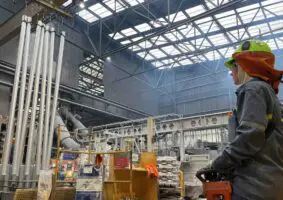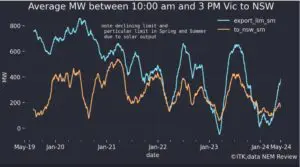For those people who think the GameStop led consumer uprising will be limited to Wall Street, there are some interesting parallels for energy market participants they would be prudent not to dismiss.
GameStop – A Brief Summary
There has been a lot of media coverage of this issue recently, but for those that missed it a group of small retail investors saw an opportunity in an organised way to buy up stock that was being shorted by large hedge funds.
The outcome of this was the stock rose more than 1,500 per cent and the major hedge fund involved was forced to raise three billion dollars in capital to cover its financial position before eventually closing its trade.
This community-based uprising appears to have occurred in line with populist political trends globally, further fuelling the David and Goliath narrative of the little people (small retail investors) being motivated more by holding predatory hedge funds to account (the system) than actually profiting from the trade.
Adding further to the intrigue was the recent intervention of the key digital enabler (Robin Hood) to limit the trading of stock and its subsequent backlash which may provide some important learnings for the energy tech providers should they face a similar scenario.
Setting the scene – Dispatchable Load
While I think it unwise to overanalyse an 11-character Elon Musk tweet appearing to support the GameStop activists, the wholesale players in the energy industry would be wise not to dismiss the dispatchable load that Tesla (and others) may eventually have.
Any coordinated action of this nature would almost certainly not be limited to a single storage provider and would need the help of others to garner enough dispatchable load to take on a coal plant.
In 2021 this may sound a bit far-fetched, but given that it ultimately aligns with the interest of the storage companies wishing to sell more products, it is at least worth exploring which assets/markets might be targeted and how it might play out.
Energy Industry Galvanising Forces
General Distrust
As with Wall Street, there is a high level of distrust in the energy industry – reflected in historically low NPS scores and the many well documented cases of monopolistic market manipulation (Enron) and regulatory gouging of rate payers to subsidise private asset owners.
This level of distrust creates fertile ground for consumer led movements to take hold as the social licence of these market participants is continually being eroded by their actions.
In the absence of a strong regulatory response to these public grievances mobilising willing participants via reddit or other forums is unlikely to be in short supply.
Need for Decarbonisation
While there is still ambivalence in some parts of the electorate to take strong action on climate change, the number of people feeling its acute impacts is rising, and institutional investors like Blackrock are drawing lines in the sand and states are putting net zero plans in place.
It is not a big stretch to imagine that the political noise of activists will only continue to rise as both the threat and costs (insurance risk etc) of not hitting 1.5°C move from a medium term to a short-term timeline.
Digital Disruption and Technological Innovation
These technology providers have traditionally positioned themselves on the side of the utility but as their products are usually being paid for by the customer, they are ultimately likely to side with them than a utility owned coal plant.
This group of solar and storage providers is likely to be fairly predictable in the competitive position in any given market over time using standard deployment cost curve reduction metrics as volumes of both continue to scale.
The second grouping of digital disruptors are those providers that link these markets with end users (retail start-ups, demand response providers, Nest, etc) who we could think of as the Robin Hoods in this story.
Key to any coordinated effort would be exposure in some way to the market price through easy-to-use digital tools allowing consumers to participate.
Australia in particular has been on the forefront of this with a number of retail offerings interfacing exposing customers to this two-sided market providing user friendly apps/customer portal linked to flexible cloud-based billing engines able to line the digital experience up with the settlement.
As with Robin Hood putting constraints on trading, these digital enablers may need to walk a fine line serving the needs of a utility and end customer without risking a similar backlash.
There could also be other potential network constraints (voltage, reverse power flows) that may limit a motivated activist in their ability to participate.
Who would they target?
If we were to game theory how something like this could play out it is worth looking at the dynamics of the asset or market that is most likely to be targeted.
In addition to an appetite for losing money in the short term, a large aggregated dispatchable load comparable to what they are taking on, and the ability to set dispatch prices the likely characteristics might include
- Carbon Intensive
- Publicly listed
- High Short Run Marginal Cost
- Highly Leveraged
- Inflexible output
- Recently opened up to competitive market
- High volume of other low-cost renewables in that market
- History of local health problems for community
- History of documented monopolistic behaviour at the expense of end users
- Transmission constraints creating tight supply/demand
If one or a number of the factors above were present such a group of activists might seek to bid into a market at just below an assets marginal cost of production depending on its flexibility/output profile.
If the asset turns off, they all turn off and recharge their batteries for when it returns to the market at which point, they would begin strategically discharging their systems again.
If they were trying to be clever about it, they may also be shorting the stock (if publicly listed and overleveraged) trying to hold its head underwater long enough for the liquidators to be brought in.
If they were sufficiently coordinated and financially motivated to pursue this strategy as we have seen with GameStop it could make for quite the trade if you were one of the early architects of such a plan.
The scenario above would still be classified as “unlikely” in my humble opinion even as more markets open up to competition and customers are able to control their dispatchable load.
Having said that, I also thought that a bunch of small investors taking on a wall street hedge fund was unlikely too, and look how that turned out.
Matt Grantham is head of industry solutions at Tally Group and a RenewEconomy contributor.










